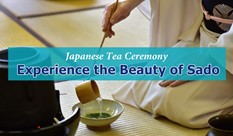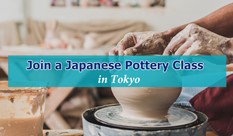Tokyo Living Guide: Best Areas & Attractions
Tokyo, Japan's capital and largest city, is a dynamic metropolis that offers a mix of modern convenience, deep-rooted history, and vibrant culture. Whether you are planning to move to Tokyo or just exploring the city, this guide will help you understand the best districts to live in and the top attractions you shouldn’t miss.
Before deciding where to live in Tokyo, it’s helpful to understand the city’s climate throughout the year. For more detailed information on temperature trends, seasonal changes, and what to expect, check out our guide on Tokyo Climate & Weather: Monthly Averages & Seasonal Tips.
The Tokyo Metropolitan Government provides 'Living Information' in multiple languages, including English, so be sure to utilize these resources to navigate daily life.
As Japan’s capital, Tokyo is at the heart of political, administrative, and economic functions. Many major corporations have their headquarters here, making it a hub for industry across various fields. Embassies and international companies also have offices in central Tokyo, contributing to its diverse, cosmopolitan atmosphere. To accommodate its foreign residents, Tokyo has been enhancing multilingual signage and services to ensure a comfortable and convenient living experience.
When it comes to finding a place to live, many expats choose to settle in popular areas like Minato and Shibuya wards. These districts are home to international schools, supermarkets selling foreign products, and a range of rental properties designed to meet the needs of expatriates, ensuring a seamless living experience.
For foreign families, suburban districts offer single-family residences, often located along school bus routes connecting to international schools. Areas like Setagaya and Meguro, known for their peaceful, low-rise houses and lush greenery, are also highly sought after. Besides the well-known tourist spots such as Asakusa, Ueno, and Kagurazaka, Tokyo boasts vibrant shopping areas like Harajuku, Shibuya, Odaiba, and Ginza, where you can enjoy the latest trends and spend a leisurely day off.

Click the image to view it in full size
Why Live in Tokyo?
Global Business Hub
As an international financial center, Tokyo is home to multinational corporations, startups, and global conferences.
Excellent Transportation System
A world-class railway and subway network makes commuting seamless and efficient.
Diverse Lifestyle Options
From bustling shopping districts to serene parks, Tokyo offers a lifestyle for everyone.
Rich Culture and Entertainment
Tokyo blends historic temples and shrines with cutting-edge technology, art, and nightlife.
Top Places to Live in Tokyo
Tokyo covers an area of 2,194 km² and has a population of approximately 14 million (as of Jan 2025). Here are some of the most popular districts to live in:
Minato-ku: International and Business-Friendly

Home to many embassies, multinational companies, and luxury residences, Minato City is a top choice for expats and business professionals. It offers a blend of high-end living and cultural attractions.
In Minato City, some of the best areas to live include Azabu, Hiroo, Roppongi, Shirokane, and Akasaka. Azabu offers an upscale residential environment, close to international schools and embassies, making it a top choice for expatriates. Hiroo is known for its peaceful atmosphere and proximity to embassies, making it a popular area for diplomats and expats. Roppongi, known for its lively nightlife, also features luxurious living options and easy access to business districts. Shirokane provides a quieter, more family-friendly atmosphere, while Akasaka combines convenient proximity to business hubs with a mix of residential and commercial properties, making it ideal for both professionals and families. These areas stand out for their high-quality housing and international facilities, making them perfect for foreign residents.
Key attractions: Roppongi Hills, Tokyo Tower, Odaiba
Shibuya-ku: Youthful and Trendy

Shibuya-ku is known for its vibrant fashion, shopping, and nightlife scene. It is a major hub for young professionals and creatives.
Key attractions: Shibuya Crossing, Meiji Shrine, Harajuku
Shinagawa-ku: A Transport Hub
Shinagawa-ku is an important business and residential district with great transport links, making it ideal for those who travel frequently.
Key attractions: Shinagawa Aquarium, Sengakuji Temple
Chuo-ku: Historical and Commercial Center

Chuo-ku is home to Tokyo’s famous shopping and business districts, including Ginza and Nihonbashi. It offers a blend of traditional charm and modern convenience.
Key attractions: Tsukiji Outer Market, Ginza, Tsukiji Hongwanji
Shinjuku-ku: Bustling and Exciting

Shinjuku-ku is a major entertainment, shopping, and business district. With its vibrant nightlife and towering skyscrapers, it’s perfect for those who love city life.
Key attractions: Shinjuku Gyoen, Kabukicho, Tokyo Metropolitan Government Buildings
Chiyoda-ku: Political and Cultural Heart

Chiyoda-ku is home to Japan’s government institutions and major cultural sites. It is a prestigious area known for its historical significance.
Key attractions: The Imperial Palace, Akihabara
Meguro-ku: Residential and Stylish

Meguro offers a quieter, more residential feel while still being well-connected to the rest of Tokyo. It is popular for its trendy cafes and cherry blossom-lined river.
Key attractions: Meguro River, Institute for Nature Study
Access to Other Areas
Train and Subway Network
Tokyo's extensive public transportation system includes the JR Yamanote Line, Tokyo Metro, private railway lines, and the Shinkansen, providing quick access to every corner of the city and beyond.
Airports
・Haneda Airport: Just 30 minutes from central Tokyo, ideal for domestic and international travel.
・Narita Airport: Around 1 hour via Narita Express, offering access to global destinations.
Highways
Tokyo is well-connected via expressways such as the Shuto Expressway, making travel by car convenient.
Top Tourist Attractions in Tokyo
Akihabara

A paradise for anime, manga, and electronics enthusiasts.
Asakusa

A historic district known for the famous Senso-ji Temple, vibrant shopping streets, and traditional atmosphere.
Odaiba

A futuristic entertainment and shopping area with waterfront attractions.
Meiji Shrine
A tranquil Shinto shrine surrounded by lush forest near Harajuku.
Shibuya Crossing
One of the most famous pedestrian crossings in the world, located in the heart of Shibuya.
Shinjuku Gyoen

A stunning park perfect for cherry blossom viewing in spring.
Tokyo Tower & Skytree


Iconic landmarks offering panoramic city views.
Tsukiji Outer Market
A must-visit for fresh seafood and traditional Japanese cuisine.
Conclusion
Tokyo is an incredible place to live, offering a blend of tradition and innovation, convenience, and cultural richness. Whether you're moving for work, study, or adventure, Tokyo has something for everyone. If you’re considering relocating or visiting, Tokyo’s endless opportunities make it a top choice.
Living Guide Articles tagged "Tokyo"

Karate Dojos & Karate in Japan
This page contains affiliate links. Emerging from the tranquil islands of Okinawa, Karate is esteemed as one of the most iconic martial arts worldwide. Renowned for its compelling repertoire, includin…

Judo and Brazilian Jiu-Jitsu in Japan
This page contains affiliate links. If karate is the most well-known of Japan's empty-handed martial arts, judo comes in second. Whereas karate stresses punches, judo, which is Japanese for "gentle ma…

Kendo Dojos in Japan
This page contains affiliate links. Kendo, or the "Way of the Sword," is a Japanese sport descended from the samurai swordsman style. A contest consists of two individuals armed with bamboo swords cal…

Aikido Dojos in Japan
This page contains affiliate links. Aikido is a style of Japanese martial arts that is relatively new. Aikido focuses on defending its practitioners without injuring their attackers. Aikido does not h…

Japanese Calligraphy (Shodo) classes in Tokyo
This page contains affiliate links. Shodo, or Japanese calligraphy, is a traditional art with much history behind it. Shodo's roots are in ancient China where kanji, one of the major forms of Japanese…

Learning Ikebana: English-Speaking Ikebana Classes in Tokyo
There are several Ikebana schools / classes in Tokyo where you can learn it in English. If you would like to know what Ikebana is, please read Exploring Ikebana, The Art of Japanese Flower Arranging.I…

Art, Music, Culture, Dance Classes in English in Tokyo
There are many classes and lessons in Tokyo available in English. These classes offer a great opportunity to experience new aspects of Japanese culture, new artistic fields, or new musical instruments…

Experience the Beauty of Sado, the Japanese Tea Ceremony
In a peaceful moment, imagine the design of an elegant kimono, the asymmetrical beauty of a flower arrangement nearby, the contrast of light green tea. Such are the scenes of Sado, the art of the Japa…

Join a Japanese Pottery Class in Tokyo
Japanese Pottery (Tougei) is popular throughout the world. Arita-yaki, Kutani-yaki, Mashiko-yaki, are just three types of Japanese ceramics. Arita yaki is made in and around the town of Arita in Saga…

Foreigner-Friendly Yoga Studios in Tokyo
Many Yoga classes are available in Tokyo and its popularity has gained within the past few years. In a fast paced city like Tokyo, stress management becomes very important and Yoga is one of the great ways to reduce stress and anxiety. There are other benefits as well such as maintaining weight, stronger bones, improving sense of balance, improving lung capacity, lower blood pressure, increasing flexibility and many more.
By PLAZA HOMES

Japanese Cooking Classes in Tokyo: Learn How to Cook Japanese Food
No Japanese, no problem—there are a wide variety of English-friendly cooking classes available throughout Tokyo that can teach you how to make all your favorite Japanese foods, from sushi and ramen to traditional home-cooked meals.
By PLAZA HOMES

Wadaiko: The Summer Rhythm and Movements of Taiko in Japan
With a multitude of purposes, strong traditions, and dynamic rhythm, wadaiko, or traditional Japanese drums also known internationally as "taiko", is a unique and interesting part of Japanese culture. While other aspects of Japanese culture may be more popular worldwide, wadaiko has a niche following in Japan and is the centerpiece of many festivals throughout the country. Keep reading as we explain what wadaiko is and how to experience it firsthand if you live around Tokyo.

Japanese Language Schools in Tokyo
Tokyo is home to some of the best Japanese language schools in Tokyo, offering courses for beginners, intermediate, and advanced learners. Whether you want to improve conversational Japanese, prepare…

Affordable or Even Free Japanese Language Classes in Tokyo
When learning a new language, especially a difficult one like Japanese, it may often seem that it will require a substantial financial investment on your part. However, if you already live in Tokyo, t…

Popular Japanese Language Schools in Tokyo for International Students
Here is an overview of major Japanese language schools in Tokyo with student capacities around or above 1,000, popular among international students (as of July 2025). You’ll find clear information abo…

Benefits of Hiring a Housekeeper When Moving
This page contains affiliate links. This article is originally posted by PINAY Housekeepgin Service in Japanese, translated and added some text by Japan Living Guide. Did you know that a housekeeping…

English-Speaking Moving Companies in Japan
This page contains affiliate links. Thinking of moving within Japan? Even if you do not speak Japanese, there are several moving companies that offer services in English. Some of them provide services…

Why Hiring a Housekeeper in Japan Might Be the Best Decision for Your Mental Health
The following article is contributed by Celestsitter. Feeling overwhelmed with daily life in Japan? You’re not alone. For many expats, adjusting to a new culture, language, and pace of life can add la…

How to Choose the Perfect Digital Nomad Accommodation in Tokyo
For digital nomads considering short-term or long-term stays in Tokyo, this article compares the differences between hotels and rental apartments, exploring their respective advantages and features. W…

Luxury Serviced Apartments in Tokyo
A serviced apartment is fully furnished with all essentials, including furniture, appliances, kitchen, and internet. It’s perfect for short or long stays. Hotel-like services are available, with spacious living areas offering comfort and luxury. English-speaking front desk staff ensure a smooth stay for international guests.
By PLAZA HOMES













